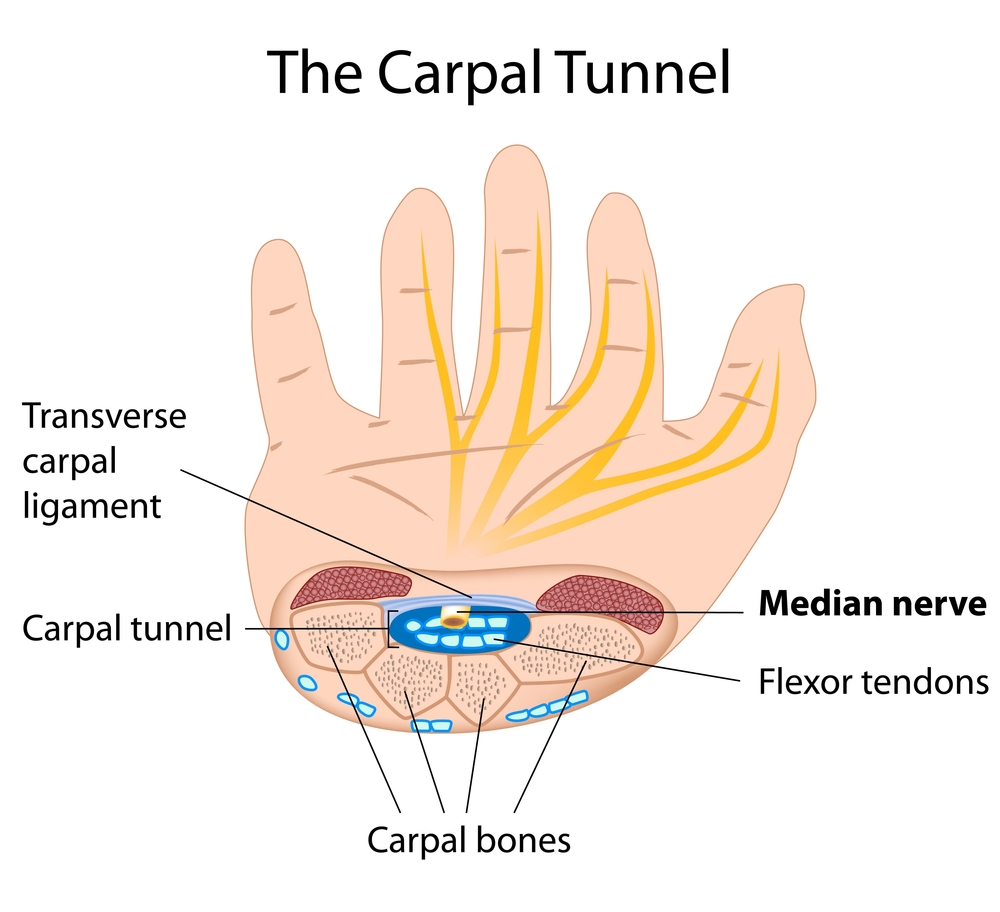Top 5 Facts About Carpal Tunnel Syndrome

Carpal tunnel syndrome is the weakening of the hand, especially in the thumb and middle fingers due to the compression of the median nerve that passes along the carpal tunnel. The carpal tunnel is a sort of passageway for the ligaments and tendons of the hand leading up to the palm side of the thumb and middle fingers. The median nerve in this tunnel extends from the forearm to the base of the thumn. When this nerve becomes compressed by the inflammation or irritation of the tendons or ligaments, the hand suffers and the person experiences symptoms which include weakening, pain, feeling of being swollen, numbness, and loss of feeling. Carpal tunnel syndrome, if not treated, can become worse and the patient can be subjected to carpal tunnel syndrome surgery.

Carpal tunnel syndrome is the most common nerve disorder today, especially in the modern world where people are always in front of their computers. Older people are more likely to get this disorder as opposed to younger ones; and females are more likely to acquire it than males.
The main symptom of carpal tunnel syndrome is numbness of the fingers; because of the popularity of this disorder, people usually associate it with any pain in the hand even before a complete diagnosis. However, there could be any other explanation for the symptoms in your hand and it is always important to have it checked out by a professional.
If you’ve never heard of carpal tunnel syndrome, then here are 5 quick but essential facts about this disorder:
- Carpal tunnel syndrome usually disrupts and disturbs the full functionality of the hand. This is because the nerve is compressed that there is increase in weakness especially manifested through grip strength and movement.
- Carpal tunnel syndrome may also interfere significantly with the sensation and sensitivities of your hand because the median nerve is partly the reason for these.
- Carpal tunnel syndrome is so widely known that any person associates this with all the occasions they feel any symptom. However, it is important to note not all symptoms point to this disorder. Many more underlying diseases or conditions can be attributed. Make sure to check with a professional and wait for a full diagnosis to rule out any other disease.
- The diagnosis for carpal tunnel syndrome can be made through history of the symptoms or how gradual it increased, physical examination, and electric testing. In some special cases, MRI or ultrasound may be used. This is important to thoroughly tell if a patient has it or not. This is also important to tell the severity of the disorder, or if the patient may need carpal tunnel syndrome surgery.
- Once a diagnosis has been made, it is important to treat it effectively. This can be done through medications, steroid injections in the wrist or during carpal tunnel syndrome surgery, or splinting of the affected area.
No matter what, if you feel as if you’re experiencing symptoms, don’t jump to conclusions immediately and remember to have a professional doctor examine your hand for you. This is crucial to determining whether or not you have a serious problem or the severity of your carpal tunnel syndrome.

